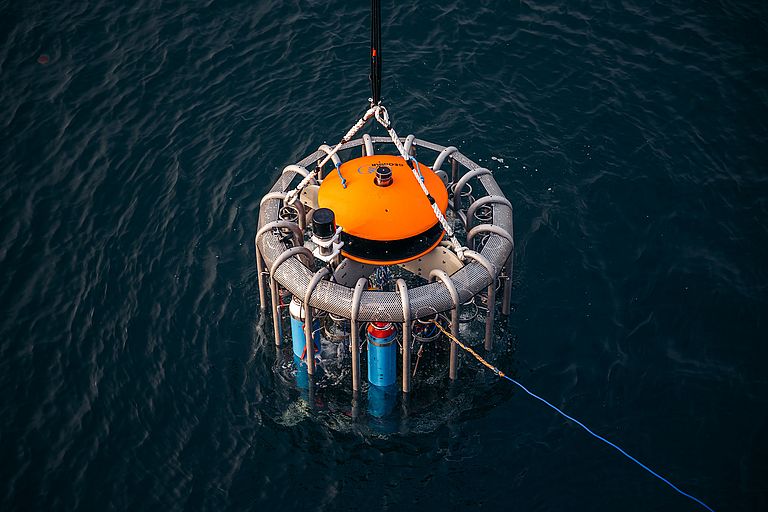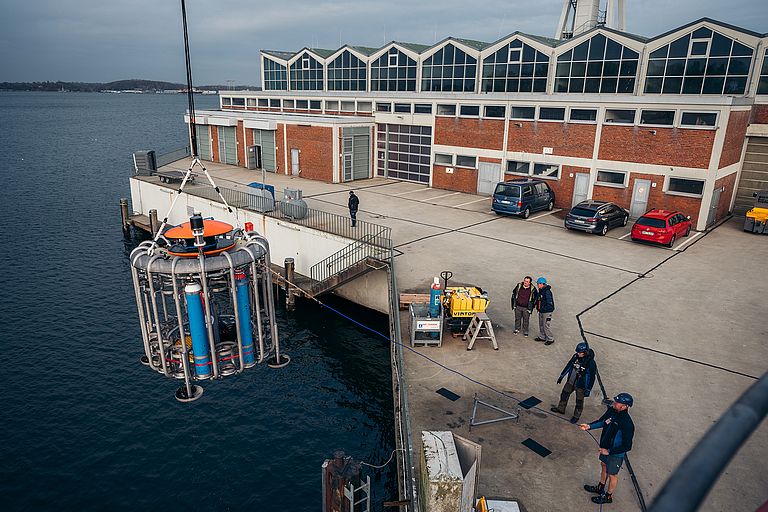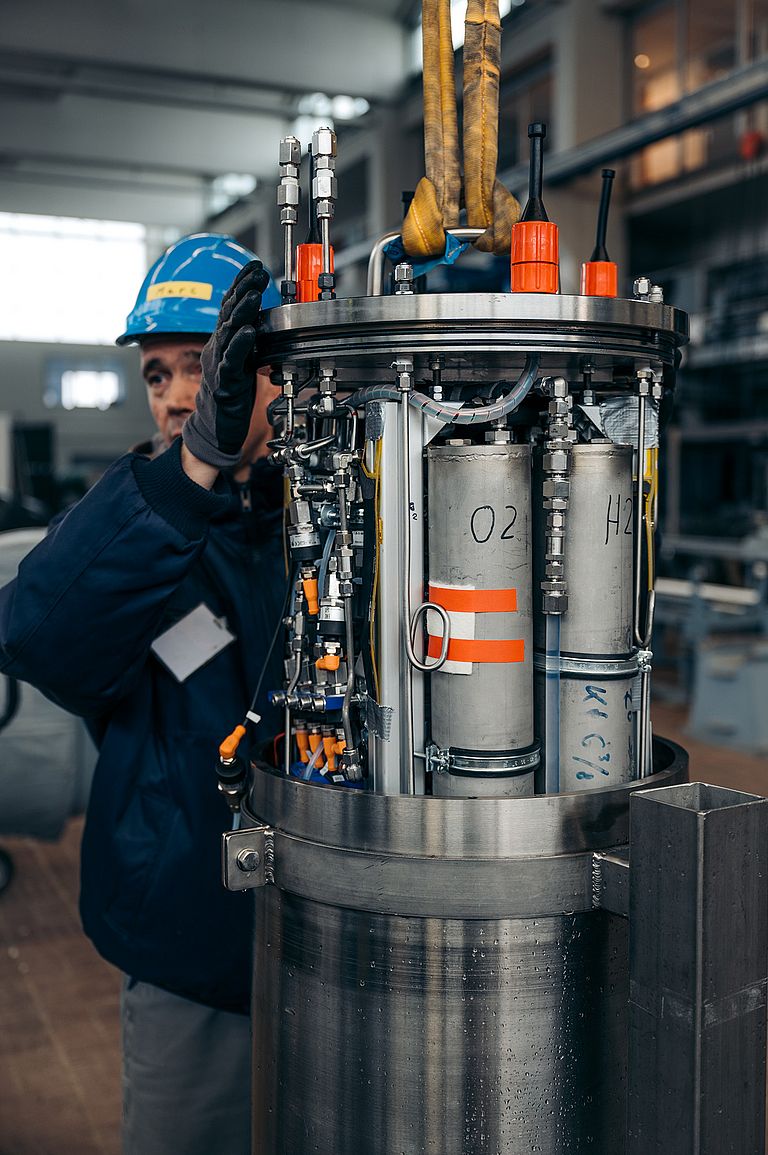New efficient and sustainable energy supply on the seafloor
Submarine fuel cell successfully tested
Under water, electricity is usually not supplied by a socket. Mostly, instrumentation for ocean observations are supplied with the necessary energy via conventional battery technology or, more rarely, via complex cable solutions. However, in particular mobile energy-intensive robotic systems for exploration and environmental monitoring on the seafloor require greater amounts of energy. As part of a research project led by GEOMAR Helmholtz Centre for Ocean Research Kiel, fuel cell technology been successfully tested for use in a long-term seafloor observatory.
“The need for long-term observation systems on the seafloor has risen considerably and will continue to move into focus in the future”, says project manager Dr Sascha Flögel from GEOMAR. Both, industry and science need data from the seafloor for various issues, for example to reliably identify trends in environmental and climate parameters or for exploration projects. Mobile, modular systems are particularly well suited for this, says Dr Flögel. Unfortunately, the increasingly complex systems also need more energy, which require larger energy storage devices. If at all possible, wiring is only an option near the coast and is very expensive.
Therefore, in Sascha Flögel's view, it is indispensable to use significantly larger energy storage systems in order to operate spatially and on long time scales (4D ocean observation). As part of the ARIM-FUEL project funded by the German Federal Ministry of Economics and Technology, GEOMAR, together with the Centre for Solar Energy and Hydrogen Research, Ulm (ZSW), has developed a deep-sea fuel cell with intermediate storage that meets the requirements of modern observatories and robotic applications. “Such a system was not available until now”, says Dr Flögel. The system developed in the project has a capacity of about 120 kilowatt-hours and a maximum output of one kilowatt. This means that this approach has ten times the capacity of previous solutions that draw their energy from primary cells or rechargeable batteries. This project also makes a valuable contribution to more sustainable ocean observation, as it can save more than 13,000 primary batteries that are used in conventional systems.
“At the beginning of November, we conducted the first successful underwater test of the system at the Defence Technology Service Unit 71 of the German Army in Eckernförde, where we found ideal test conditions”, says Dr Flögel. The finalisation of the system is planned for February 2022 during an expedition with the research vessel ALKOR.
In the medium term, the researchers at GEOMAR want to use the new energy source in the context of a series of robotic monitoring projects in the coming years. “The new energy supply for under water systems creates completely new possibilities for us to use the devices over longer periods of time”, concludes Sascha Flögel.
Note:
The project was carried out as part of the BMWi project ARIM-FUEL (Development of a fuel cell for submarine long-term applications and its testing in field studies). Duration: 01.06.2018 - 30.11.2021 (funded by MarTERA ERA-NET Cofund scheme of Horizon 2020 of the European Commission).





